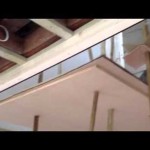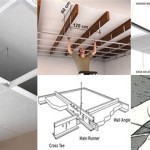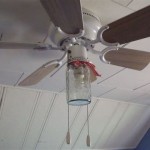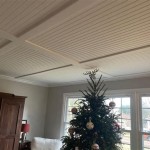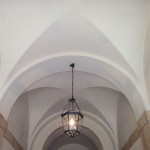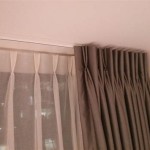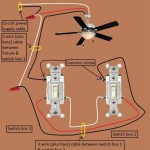Replacing a Ceiling Fan Glass Bowl: A Comprehensive Guide
Ceiling fans are fixtures that provide both illumination and air circulation within a room. A common feature of many ceiling fans is a glass bowl or shade that houses the light bulbs. Over time, these glass bowls can become damaged, cracked, or broken, necessitating a replacement. This article provides a comprehensive guide to replacing a ceiling fan glass bowl, covering aspects such as identifying the correct replacement, safety precautions, the replacement process, and troubleshooting potential issues.
Identifying the Correct Replacement Glass Bowl
The first and arguably most important step in replacing a ceiling fan glass bowl is identifying the appropriate replacement. A mismatched bowl can lead to compatibility issues, aesthetic inconsistencies, and potential safety hazards. Several factors must be considered when selecting a replacement.
Diameter and Fit: The diameter of the replacement glass bowl must match the existing fixture. Measure the diameter of the opening where the bowl attaches to the fan. This measurement is crucial for ensuring the replacement bowl sits securely and does not wobble or fall. It's important to not only measure the outside diameter of the old bowl, but also the diameter of the lip or flange that sits within the fixture itself.
Mounting Style: Ceiling fan light kits utilize various mounting mechanisms. Common types include threaded collars, clip-on systems, and those secured with a retaining nut. Examine the original bowl and the light fixture to determine the mounting style. The replacement bowl must be compatible with this mounting mechanism. Attempting to force an incompatible bowl can damage the fixture or result in an insecure attachment.
Glass Type and Finish: The glass type and finish contribute significantly to the overall aesthetic of the ceiling fan. Common glass types include frosted, clear, and textured glass. The finish may be smooth, etched, or colored. Consider the existing decor and lighting needs when choosing the replacement. A frosted bowl, for example, diffuses light more evenly than a clear bowl.
Bulb Compatibility: The replacement bowl must accommodate the type and wattage of light bulbs used in the ceiling fan. Check the maximum wattage rating of the fixture and the bulb base type (e.g., E26, E12). Ensure the replacement bowl provides adequate clearance for the bulbs to prevent overheating and potential fire hazards. A bowl that is too small could trap heat and damage the fixture or the bulbs themselves.
Manufacturer and Model Number: If possible, locate the manufacturer and model number of the ceiling fan. This information is often found on a sticker on the motor housing or in the original documentation. Contacting the manufacturer or an authorized retailer can help identify the correct replacement bowl. Providing the model number ensures a precise match and reduces the risk of ordering an incompatible part.
Visual Inspection: If manufacturer information is unavailable, carefully compare the existing bowl to available replacements. Pay attention to the shape, size, and mounting features. Online retailers often provide detailed product descriptions and images, allowing for a thorough comparison. Consider ordering from a retailer with a good return policy to facilitate exchanges if the initial replacement is not a perfect fit.
Safety Precautions Before Replacement
Prioritizing safety is paramount when working with electrical fixtures. Before commencing the replacement process, several safety precautions should be observed to prevent electrical shock and potential injuries.
Turn Off the Power: The most critical safety measure is to disconnect the power supply to the ceiling fan at the circuit breaker. Locate the breaker that controls the fan and switch it to the "off" position. This prevents accidental energization of the circuit during the replacement process. Double-check that the power is off by testing the light fixture with a non-contact voltage tester. This will indicate if there is any residual voltage in the wiring.
Use a Sturdy Ladder: Replacing a ceiling fan glass bowl often requires working at height. Use a sturdy, stable ladder that is appropriate for the task. Ensure the ladder is placed on a level surface and that it is properly secured. Avoid overreaching while on the ladder, and reposition the ladder as needed to maintain a safe working posture. A falling ladder can cause serious injuries.
Wear Safety Glasses: When handling glass, there is always a risk of breakage. Wear safety glasses to protect the eyes from shards of glass. This is especially important when dealing with a broken or cracked bowl. Fragments of glass can be sharp and cause serious eye injuries.
Wear Gloves: Wear work gloves to protect the hands from cuts and abrasions while handling the glass bowl and the fixture components. Gloves also provide a better grip, reducing the risk of dropping the bowl. Cotton or leather gloves offer adequate protection for this task. Rubber gloves are not recommended, as they can reduce grip.
Clear the Area: Ensure the area beneath the ceiling fan is clear of furniture and other obstacles. This provides a safe working space and prevents accidental damage to surrounding items. Cover the floor with a drop cloth or newspaper to catch any falling debris. This makes cleanup easier and prevents scratches to the flooring.
Inspect the Wiring: Before replacing the bowl, visually inspect the wiring connections inside the light fixture. Look for any signs of damage, such as frayed wires or loose connections. If any issues are found, consult a qualified electrician to address the wiring before proceeding. Damaged wiring can pose a fire hazard or cause electrical shock.
The Replacement Process
With the correct replacement glass bowl identified and safety precautions in place, the replacement process can be initiated. The specific steps may vary slightly depending on the mounting style of the light fixture.
Remove the Old Bowl: Carefully remove the old glass bowl from the fixture. Depending on the mounting style, this may involve unscrewing a retaining nut, releasing clips, or unscrewing a threaded collar. If the bowl is broken, handle the pieces with care to avoid cuts. Place the broken pieces in a sturdy container for safe disposal.
Clean the Fixture: Before installing the new bowl, clean the light fixture to remove any dust, debris, or residue. Use a soft cloth and a mild cleaning solution. Avoid using abrasive cleaners, as they can damage the finish. Ensure the fixture is completely dry before proceeding.
Install the New Bowl: Position the new glass bowl according to the mounting style. If it uses a threaded collar, carefully screw the collar onto the bowl until it is snug but not overtightened. If it uses clips, align the bowl with the clips and gently snap them into place. If it uses a retaining nut, place the bowl in position and tighten the nut until the bowl is secure. Ensure the bowl is properly aligned and does not wobble.
Reinstall the Light Bulbs: After the new bowl is installed, reinstall the light bulbs. Ensure the bulbs are properly seated in the sockets and that they are the correct type and wattage for the fixture. Avoid touching the bulbs with bare hands, as this can leave oils that shorten their lifespan. Use a clean cloth or paper towel to handle the bulbs.
Restore Power: After all components are securely in place, restore power to the ceiling fan at the circuit breaker. Turn the breaker to the "on" position. Test the light fixture to ensure it is working properly. If the light does not turn on, check the bulb connections and the wiring again.
Inspect for Issues: After restoring power, inspect the installation for any issues. Check for any unusual noises, vibrations, or flickering lights. Ensure the bowl is securely attached and does not wobble. If any problems are detected, turn off the power and re-examine the installation. If necessary, consult a qualified electrician.
Troubleshooting Potential Issues
Even with careful installation, some issues may arise during or after the replacement process. Common problems and troubleshooting steps include:
Bowl Not Fitting: If the replacement bowl does not fit, double-check the diameter and mounting style. Ensure the bowl is compatible with the fixture. If the bowl is slightly too large, it may be possible to adjust the mounting hardware. If the bowl is significantly too large or too small, it will need to be exchanged for a different size. Incompatibilities are best addressed with a replacement.
Wobbly Bowl: A wobbly bowl indicates an insecure attachment. Ensure the mounting hardware is properly tightened. If the bowl is still wobbly, check for damaged or worn components. Replacing the mounting hardware may resolve the issue. If the fixture itself is damaged, it may require professional repair or replacement.
Light Not Working: If the light does not turn on after replacing the bowl, check the light bulb. Ensure the bulb is properly seated in the socket and that it is not burned out. Test the bulb in another fixture to confirm it is working. If the bulb is good, check the wiring connections inside the light fixture. Loose or damaged wires can prevent the light from working. A multimeter can be used to test the voltage at the socket to confirm power is present.
Flickering Light: A flickering light can be caused by a loose bulb, a faulty dimmer switch, or loose wiring connections. Ensure the bulb is tightly screwed into the socket. If the fan is equipped with a dimmer switch, try adjusting the dimmer to see if it resolves the issue. Check the wiring connections for any signs of looseness or damage. Poor connections are a common cause of flickering, especially in older fixtures.
Unusual Noises: Unusual noises, such as buzzing or humming, can indicate a problem with the motor or the wiring. Turn off the power and inspect the motor for any signs of damage. Check the wiring connections for any looseness or shorts. If the noise persists, consult a qualified electrician. Ignoring unusual noises can lead to more serious problems.

Ceiling Fan Glass Bowl Light In Seeded Finish 133 Dan S City Fans Parts Accessories

Reviews For Private Brand Unbranded Replacement Matt Opal Glass Bowl 44 In Windward Ceiling Fan Pg 3 The Home Depot

Windward Iv Ceiling Fan Replacement Glass Bowl Frosted White

Hunter 6 In X 14 Bowl White Linen Clear Glass Ceiling Fan Light Shade With 2 1 4 Set Crew Fitter The Shades Department At Com

Private Brand Unbranded Flowe Brushed Nickel Ceiling Fan Replacement Glass Bowl 8239205866 The Home Depot

Ceiling Fan Glass Bowl Light In White Scavo 130 Dan S City Fans Parts Accessories

White Linen Glass Bowl 99162 Hunter Fan

Westinghouse 724756910 Light Fixture Shade Lightbulbs Com

Hunter 6 In X 11 Bowl Frosted Amber Stained Glass Ceiling Fan Light Shade With 2 1 4 Reflector Fitter The Shades Department At Com

White Ceiling Fan Light Cover Replacement Glass Shade Bowl Globe Frosted Paint
Related Posts

